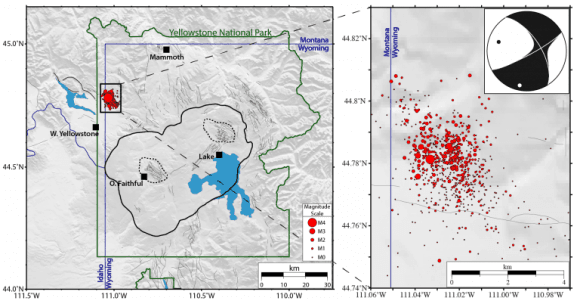Geologists have recorded 878 earthquakes, as of June 26, at the Yellowstone supervolcano in the past two weeks—approaching double the number of quakes reported a little over a week before.
Though the swarm is the largest in five years, scientists with the United States Geological Survey say that there is almost no risk of the supervolcano erupting and that risks to planes traveling overhead are also minimal.
The current swarm of earthquakes began on June 12 on the western edge of Yellowstone National Park. By June 19, the number of quakes reached the highest in five years at 464 total events, USGS reported.
The breakdown of the magnitude of the 878 quakes in the latest update is as follows:
- 1 earthquake in the magnitude 4 range
- 5 earthquakes in the magnitude 3 range
- 68 earthquakes in the magnitude 2 range
- 277 earthquakes in the magnitude 1 range
- 508 earthquakes in the magnitude 0 range
- 19 earthquakes with magnitudes of less than zero
Earthquakes with a magnitude of less than zero are tiny events that can only be measured with extremely sensitive equipment.






